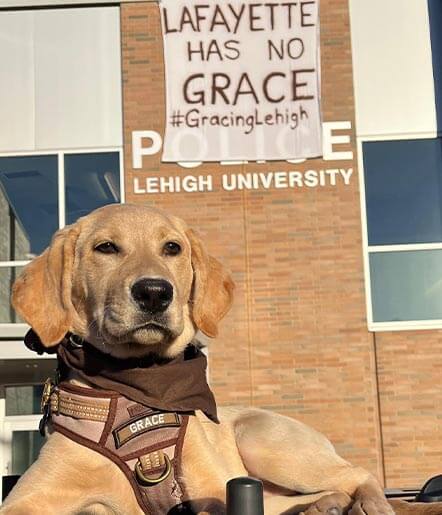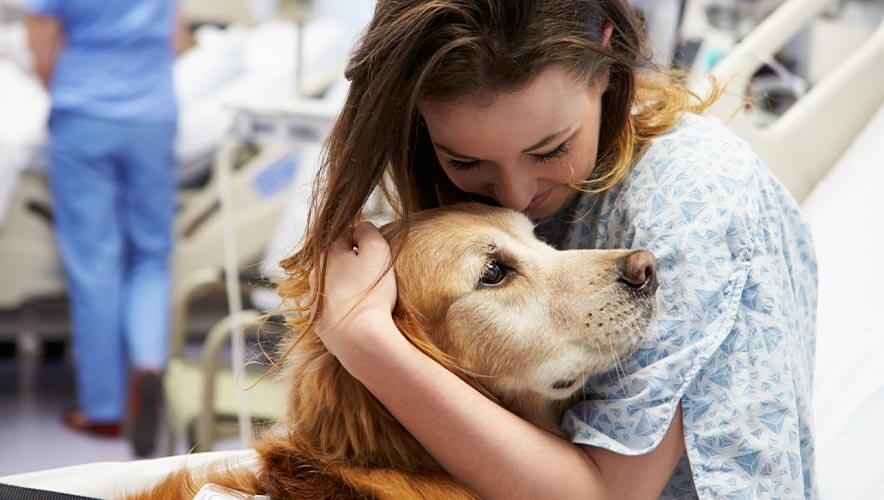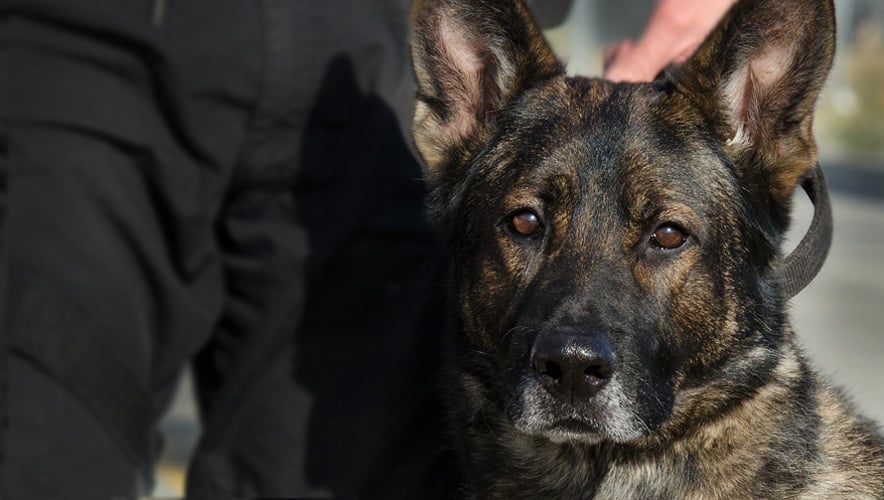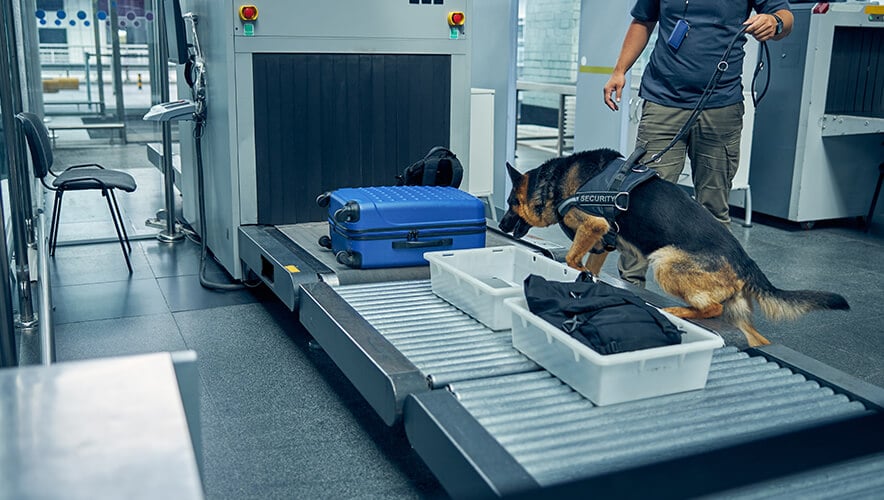When Dogs Aren’t Hunting or Hurting, but Healing
“Can I pet your dog?”
People are naturally drawn to canines, whether they appear to be pets or working animals. But for security K9s, interrupting their work for playtime or a cuddle is usually off-limits.
However, Richard Simons, a police officer for public safety at Yale University in New Haven, Connecticut, says petting his working dog, Heidi, is okay. In fact, it’s Heidi’s job.
Simons’ K9 program at Yale is part of an effort to improve community policing and engagement at the university. He still remembers when he was a new Yale Public Safety police officer 30 years ago: how freshman students on move-in day were nervous to talk to the cop in uniform. When he came back years later as a cop with a dog, everything changed.
“The minute I walked in, it was a total turnaround,” he says. “Everyone wanted to know Heidi's name and pet her, and it was a springboard for conversations that made the public safety officers seem more normal.”
Simons had pitched the idea for years to his own leaders until he finally got someone to approve it—as long as he could fund the dog and the training. He found a non-profit, Puppies Behind Bars, to give him a dog. The trainers—incarcerated prisoners—raise and train dogs for veterans, first responders, police officers, and explosives-detection units. After training online and in person with Heidi, Simons went to the prison where Heidi spent her first months of life to train in person. (He got her in summer 2020.) Initially nervous about visiting the prison, he was moved by the trainers’ kindness, deep love for the dogs, and their curiosity about Heidi.
“They all really wanted to know exactly how she was doing with me,” he says.
Since then, Simons and Heidi have been to thousands of locations in Yale and across the country—to hospitals, daycare facilities, schools, and even funerals. Heidi’s main command is “Tell me a story,” where she walks up to someone sitting on the ground, puts her front paws up against his or her chest, and lies down on their lap to give the person a chance to pet her and talk out whatever’s on his or her mind. Heidi was trained to do more—such as retrieve items and turn lights on and off—as a service animal through the Americans with Disabilities Act, which calls for “a dog that is individually trained to do work or perform tasks for a person with a disability.”
Heidi’s job today is different. As a facility dog, she works as a helper tied not to one person but to anyone in need of emotional support, a friendly hug, or a dog to listen.
“Our job is to create smiles,” Simons says.
University students, especially those in what Simons calls “high-stress programs” like medicine and law, appreciate a chance to sit with Heidi for a while. Students even wait in line at public events for a chance to sit with her.
Community engagement was also the goal for another campus safety officer, David Kokinda at Lehigh University in Bethlehem, Pennsylvania. In his application to get a therapy dog from a training program, Kokinda explained that a dog could help victims of violence on campus. A therapy dog could comfort victims while they told their stories in what can be intimidating rooms with police officers. Enter Grace, a yellow Labrador retriever that started work with Kokinda as a therapy dog in August 2023.
Many police officers scoff at a “therapy dog” like Grace, according to Kokinda, but the dog’s presence makes a difference.
“In one instance, the victim was talking through a traumatic experience,” Kokinda says. “And she was kind of chuckling, because Grace was throwing her ball around the room.” Kokinda had never seen a student recounting an awful experience show that kind of lightness.

Lehigh University's police department hung a banner taunting rival college Lafayette, bragging that Lehigh is the home of Grace the therapy dog. Photo courtesy of David Kokinda, Lehigh University.
It isn’t always light, however. Heidi and Simons show up to schools and other locations after shootings, crimes, and deaths. Heidi made more than 750 visits in 2023, but one that sticks in Simons’s memory is the funeral of two police officers murdered in the line of duty in New York City. Heidi was one of four dogs who went into St. Patrick’s Cathedral, where the calm, patient dog sat with the grieving families, including children.
Simons’ contract with Yale is up in 2024, and Heidi will retire with him. He expects the pair of them will find some way to be of service as a therapy and emotional support duo for years to come.
Kokinda and Grace at Lehigh University have just started their own journey, and Kokinda is excited. Grace improves morale in the department, will soon help in difficult post-event debriefings in the police department itself, and continues to break down barriers between students and officers on campus.
“Grace gets everybody excited,” Kokinda says. “She brings everybody up.”
Brendan Howard is host of the monthly podcast Security Management Highlights from ASIS International. He has been working in publishing and multimedia for nearly 25 years.











